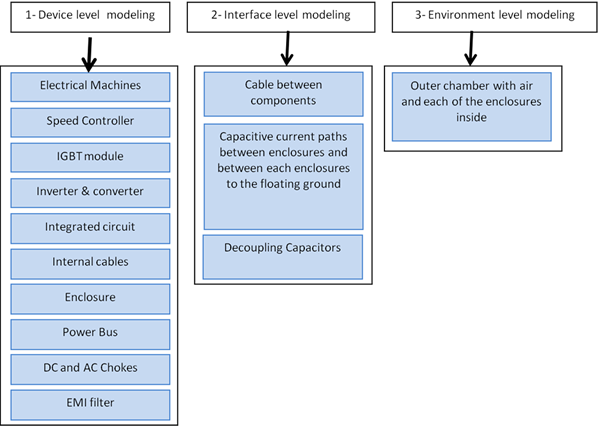Almost all of the engineering development process of electrical apparatus considers the EMC and EMI issues in the final stage of design at prototyping stage. Unfortunately, the cost of the mitigation actions for EMC problems that are not seen until prototype testing is almost high compared with the cost of the device changes introduced at earlier stages in the development life cycle. Moreover, the existing sub-system EMC requirement methods (that are often identical requirements on all sub-systems) might cause in many sub-systems being over-engineered.
Numerical models used to develop more practical specifications and to identify potential EMC and EMI risks at the design stage could therefore lead to potential cost savings, problem avoidance in each of the sub-systems and in the whole of the system, and signature analysis. Numerical simulation results also offer other potential benefits such as reduced dependence on physical testing and a source of objective data for ranking product packaging options.
Classification of the numerical level necessary to predict the different performance measures in the virtual test environment
| Model Leveling | Model character | Objectives | |
| A1 | 3D in time or Frequency Domain | Electromagnetic – (surface or volumes meshing) |
3D Electromagnetic field distribution and related parameters |
| A2 | 2D or 3D quasi-static analysis in time harmonic domain | Quisi-static, electromagnetic -(surface , volumes, or peripheral meshing ) |
Calculation of low to high frequency RLC elements of each of the components, frames, and frame to outer chamber |
| A4 | 0 D in time or frequency domain | Lumped element circuit -(Discrete mathematical models) |
Physics-based circuit model ( circuit simulation environment) |
Decomposition of the multi-scale problem:
Because of the nature of the multi-scale problem which is a multi-level numerical modeling, and the requirement of the numerical test environment which needs to be simply and quickly recreated, the separate modeling of each of the components and sub-components is needed. Therefore, it is beneficial to divide the problem into three levels, as shown in below figure.


